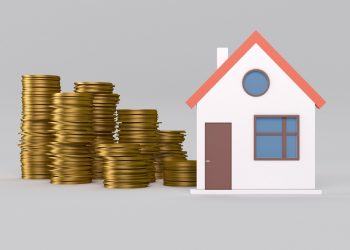RISMEDIA, July 31, 2010—New homeowners oftentimes stretch themselves financially when having to pay the initial costs that come with purchasing a home. While it is important to focus on these preliminary expenses, homeowners must be aware of the financial requirements that come with maintaining the home. Here, Dan Steward, President, Pillar To Post discusses how homeowners can effectively budget for home maintenance.
 Dan Steward
Dan Steward
President
Pillar To Post
www.pillartopost.com
Enthusiastic new home buyers often stretch financially to cover a home’s initial deposit, closing costs and any cosmetic touchups.
However, buyers frequently focus only on those first costs, overlooking the financial requirements of maintaining the home over time. Providing some guidance to your clients regarding realistic maintenance costs will help them transition smoothly into ownership of that house.
According to industry standards, homeowners should have 1% of the purchase price of their home in savings for improvements and surprise expenses. While this minimum will help ease through maintenance costs, a 2-3% cushion is far more prudent.
A home inspection will help prospective buyers better understand the condition of the house, gaining insights and recommendations from the inspector during the inspection. At Pillar To Post, we also deliver a detailed, computerized inspection report onsite, so buyers have a printed guide available for future planning.
A home inspector will estimate the age of major structural components and systems, providing the buyer an indication of each item’s anticipated lifespan. A furnace, for example, often lasts between 12 and 15 years and a water heater lasts from ten to 12 years. Understanding the current age of any particular system will allow buyers to calculate approximately when they’ll be due for major repairs or replacement.
LivingWithMyHome.com offers a list of approximate life expectancies of home components as well as cost estimates, useful as a tool for financial planning of homeownership. Our company, Pillar To Post, sponsors this site in response to questions from prospective home buyers across North America regarding how much they should plan to spend on ongoing maintenance costs.
Once the buyer has completed the home inspection, negotiated the price according to information gained in the inspection and possibly had the sellers repair or pay for needed upgrades, it’s time to plan the maintenance budget for the future.
Home buyers should plan for big-ticket costs across a five-year timeline, budgeting for major expenses, such as roof repairs, new air conditioners or plumbing upgrades. The best plan is to sock away those funds, rather than relying on borrowing from banks. As the credit crunch has deepened, banks have nearly stopped offering home equity lines of credit, so counting on a loan for needed repairs is a risky strategy.
This brings us to timing of repairs—when small problems pop up, it’s important to address them before they become large-scale projects. A minor leak on a window frame can seem innocuous, but with repeated rains that leak can turn into window rot and even mold.
Again, this is where preparedness in budgeting can make all the difference—the ability to correct a minor problem immediately will likely mean a lower-cost repair and a less-demanding repair job.
Buying a home is one of the largest investments most people ever make. Helping your clients plan successfully to have a strong, positive home-buying experience will create the most beneficial outcome possible for them and for you.
Now, back to the monthly expenses. Estimating these regular costs often trip up new home buyers as well. Many people, particularly former renters, are accustomed to paying rent and likely utilities, phone, Internet service and cable.
As a homeowner, however, there will be other utility costs such as water, sewer and trash collection. Then there are property taxes, homeowner’s insurance and possible homeowner’s association dues.
Home buyers can also have seasonal, recurrent expenses such as snow removal and lawn service that should also go into that five-year budget. Helping your customers understand not only how to find and purchase their ideal home, but maintain it as well is the value-add service you can provide that will benefit them for the future.










